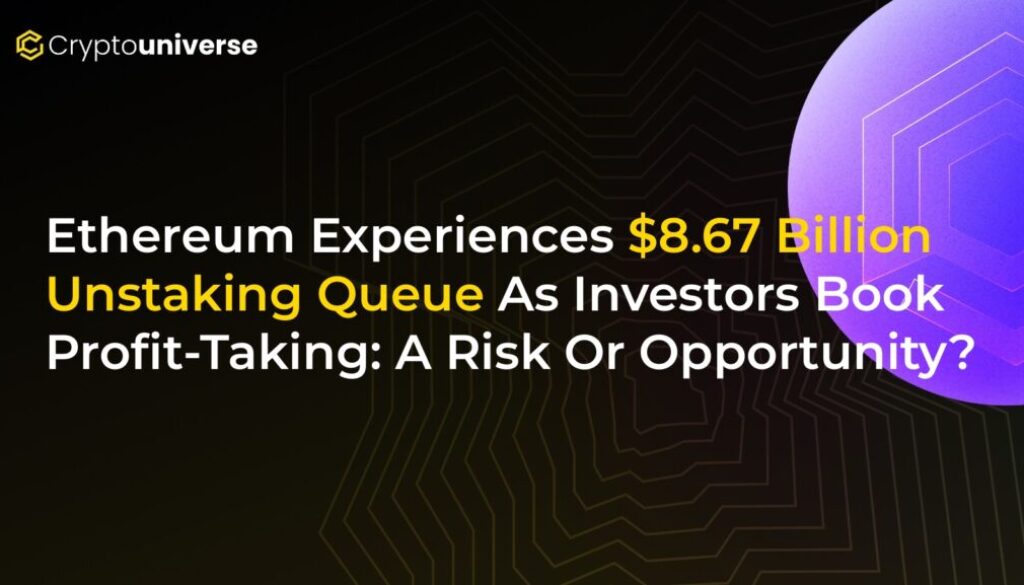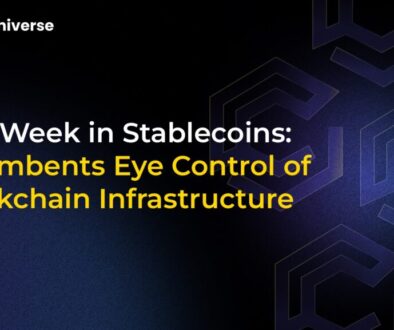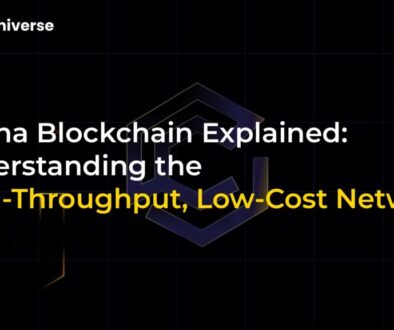Ethereum Experiences $8.67 Billion Unstaking Queue As Investors Book Profit-Taking: A Risk Or Opportunity?

A Tidal Wave of Unstaked ETH: What’s Behind the $8.67 Billion Queue?
The Ethereum network is currently witnessing an unprecedented event: a massive queue of validators looking to unstake their ETH, totaling over 2.16 million ETH valued at approximately $8.67 billion. This surge in withdrawal requests has extended the waiting period to an average of 37 days, raising questions across the crypto community. Is this a sign of impending market pressure, or a natural evolution of a maturing ecosystem? Let’s dive into the dynamics behind Ethereum’s massive unstaking queue.
Validators, or “stakers,” are the backbone of Ethereum’s Proof-of-Stake (PoS) consensus mechanism. They lock up their ETH to help secure the network by processing transactions and creating new blocks, earning rewards in return. The current backlog signifies a strong demand from these participants to exit their positions and regain liquidity.
🚨 Update: Over 2,168,091 $ETH is currently queued for withdrawal, with an average wait time of 37 days to unstake. The backlog highlights strong demand dynamics around Ethereum staking and potential shifts in liquid supply once processed.
Why the Sudden Rush for the Exit?
The primary driver behind this trend appears to be strategic profit-taking. Over the past 12 months, Ethereum has seen an impressive price surge of nearly 50%. Many long-term investors who staked their ETH when prices were lower are now looking to realize their substantial gains. However, selling isn’t the only motivation. Other key factors include:
- Strategic Repositioning: Not every unstaked ETH is destined for an exchange. Savvy investors may be unlocking their capital to deploy it in other areas of the decentralized finance (DeFi) ecosystem, seeking higher yields or more dynamic investment opportunities that aren’t available while their assets are locked in staking.
- Market Sentiment: The broader crypto market has faced a downturn recently, with ETH’s price falling over the past week and month. This bearish sentiment, coupled with a slowdown in ETF inflows and large-scale liquidations, may be prompting some investors to de-risk their portfolios.
The 37-Day Wait: A Feature, Not a Bug
The lengthy withdrawal period has drawn comparisons to other networks like Solana, which boasts a much faster 2-day unstaking process. This has sparked concerns about liquidity and market stability within the Ethereum ecosystem. However, Ethereum co-founder Vitalik Buterin has clarified that this is not a technical flaw but a deliberate design choice.
The prolonged exit queue is an essential security measure. It prevents a mass exodus of validators from destabilizing the network during times of high volatility or a security attack. By throttling the rate of withdrawals, Ethereum ensures its blockchain remains secure and robust. This wait time can be further extended by external factors, as seen after a security incident involving staking provider Kiln, which caused delays of up to 42 days as extra safety measures were implemented.
The Billion-Dollar Question: A Risk or an Opportunity for ETH’s Price?
The influx of Ethereum’s <$8.67 Billion Unstaking Queue> presents a classic two-sided coin for the market. Understanding both perspectives is key to navigating the weeks ahead.
The Bear Case: The Risk of Sell Pressure
The most immediate concern is the potential for a significant increase in sell pressure. If a large portion of the 2.16 million unstaked ETH is transferred to exchanges and sold, it could create downward momentum for the price. This is a valid risk, especially given the recent market downturn and could lead to further price corrections in the short term.
The Bull Case: An Opportunity for Growth and Maturity
On the other hand, this event can be viewed through a more optimistic lens. The unstaking activity could signal:
- Institutional Rebalancing: Large institutions might be unstaking ETH not to sell, but to move it into their own custody or financial reserves, which is a sign of long-term commitment.
- Fuel for DeFi: The newly liquid ETH could flow back into the DeFi ecosystem, boosting liquidity for lending protocols, decentralized exchanges, and other innovative applications, ultimately strengthening the entire network.
- A Healthy Market Cycle: The ability for investors to take profits is a hallmark of a healthy, functioning market. It demonstrates that the staking mechanism works as intended, from entry to exit.
Conclusion: Watching for the Next Move
The massive Ethereum unstaking queue is a multifaceted event driven by profit-taking, strategic asset management, and the network’s inherent security design. While the risk of short-term sell pressure is real, it’s equally plausible that this unlocked capital will be redeployed within the Ethereum ecosystem, fueling the next wave of DeFi innovation.
For now, the market is watching closely. How this $8.67 billion in liquid ETH is ultimately used will be a telling indicator of investor sentiment and the future direction of the Ethereum network.


